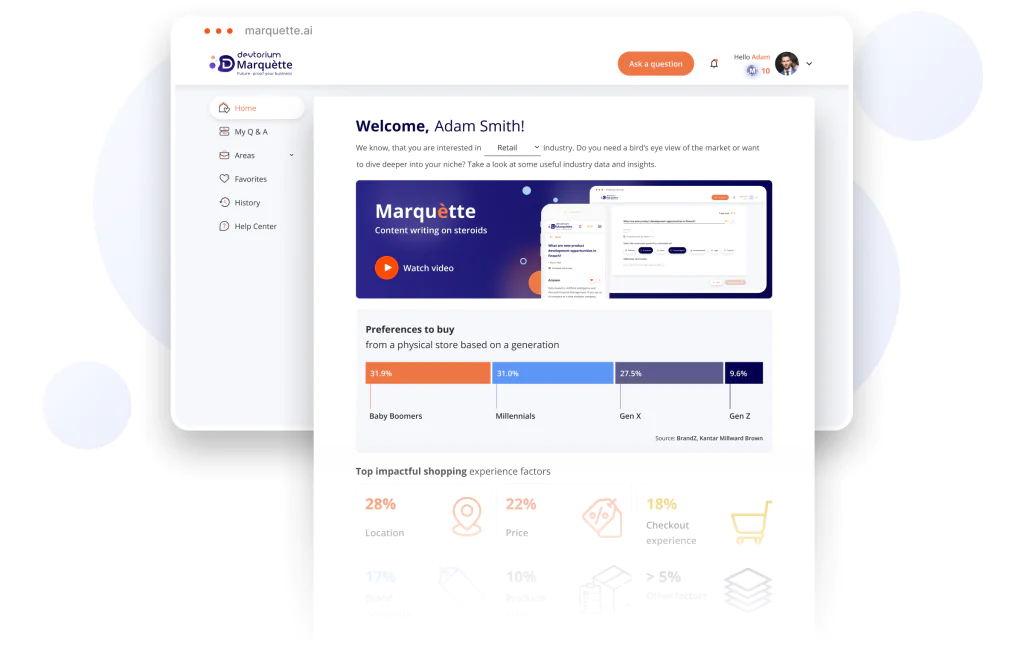Devtorim’s AI-powered platform Marquètte is getting better at generating interesting articles you can use for blogs and even for self-education. Today we used one of the new marketing templates to have AI share ideas on using an AI chatbot for business. Check out what it had to say below.
Ideas on How to Use an AI Chatbot for Business in AI’s Own Words
In today’s digital world, businesses increasingly turn to artificial intelligence (AI) chatbots to automate customer service and enhance customer engagement. AI chatbots have the potential to save time and money while providing a more personalized customer experience. In this blog post, we’ll explore how to use an AI chatbot for business, the benefits of using an AI chatbot, examples of successful AI chatbot implementations, challenges of using an AI chatbot, best practices for deploying an AI chatbot, and how to measure the success of an AI chatbot.

How to Use an AI Chatbot to Automate Customer Service
AI chatbots can be used to automate customer service tasks such as:
- Answering frequently asked questions
- Providing product information
- Helping customers with their orders
They can also be used to respond quickly to customer inquiries and provide personalized recommendations based on customer data. By using an AI chatbot, businesses can save time and money while improving customer satisfaction.
Benefits of Using an AI Chatbot for Customer Engagement
AI chatbots can help businesses to provide personalized service. For example, they can answer customer questions 24/7 and provide automated support.
In addition, AI chatbots can collect customer data and improve customer engagement through targeted messages. AI chatbots can save time and money by automating everyday customer service tasks.
Examples of Successful Uses of an AI Chatbot
AI chatbots can be used for a variety of business needs. For instance, the Bank of America uses an AI chatbot to help customers with account inquiries and transactions.
There is also Sephora, a company that leverages AI to power an in-app virtual assistant that helps shoppers find the right products.
Moreover, Domino’s Pizza has created an AI chatbot to take orders and provide personalized recommendations.
Challenges of Using an AI Chatbot for Business
Implementing an AI chatbot for a business can be a challenging process. Designing, developing, and deploying a chatbot requires a lot of time and resources.
Additionally, businesses must consider the cost of hosting and managing the chatbot and other associated expenses. Finally, it may take some time before companies realize their chatbot’s full potential.

Best Practices for Deploying a Chatbot
Deploying an AI chatbot can be a great way to improve customer service. However, it’s important to ensure that the chatbot is designed to meet the customer base’s needs and that it is properly integrated into the existing customer service infrastructure.
Moreover, providing customer service agents with the necessary training to manage conversations with the AI chatbot is crucial. Finally, you also need ways to monitor customer service interactions for quality assurance purposes.
How to Measure the Success of an AI Chatbot
Measuring the success of an AI chatbot depends on the goals you have set. For example, you can measure the number of interactions, user satisfaction and conversion rates, or time on task. Additionally, you can use surveys and feedback forms to gain insights into the user experience.
Final Thoughts: Should You Start Using an AI Chatbot for Business?
AI chatbots can be invaluable for businesses looking to automate customer service and improve customer engagement. While there are potential challenges in implementing an AI chatbot, with the right strategies and best practices in place, businesses can maximize the success of their chatbot. In addition, deploying an AI chatbot is a great way to increase customer satisfaction while reducing customer service costs.
So, those were thoughts directly from AI. What do you say? Do you agree with these opinions and ideas? Will you start using an AI chatbot for your own business?
If you are ready to take this step, set up a free meeting with our development team!
For more thoughts on AI also see:























 Oleksii Makarov
Oleksii Makarov


